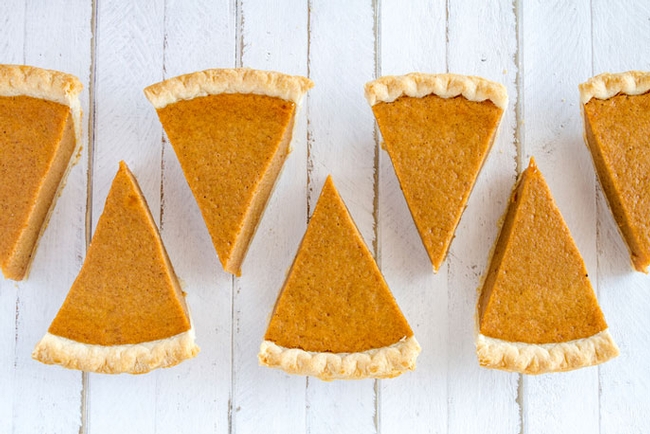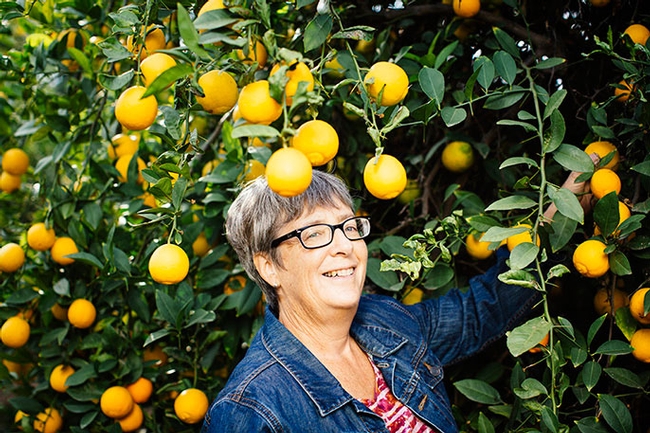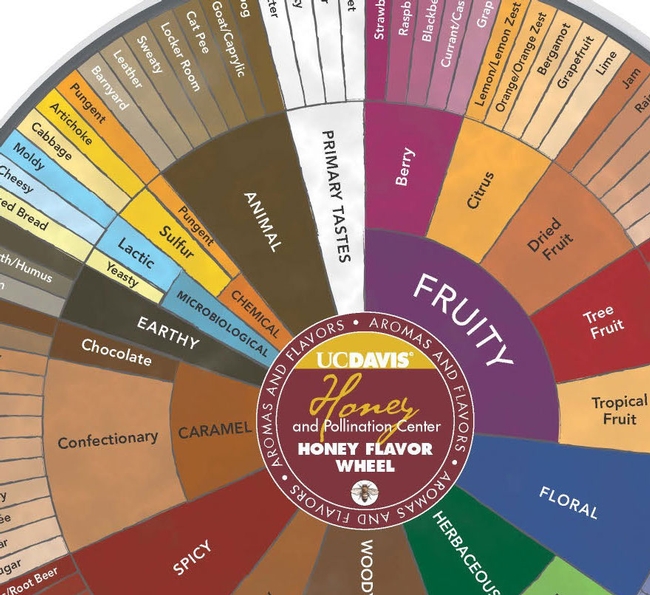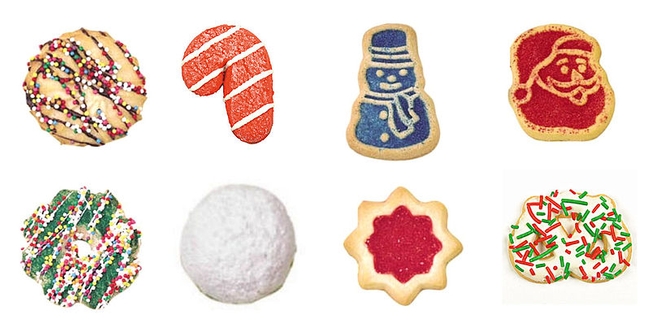Posts Tagged: holiday
Seven tips for enjoying holiday meals
Before you gobble down that Thanksgiving turkey and pumpkin pie, take a moment to maximize your enjoyment.
The University of California has experts on every topic imaginable, including food and the science of taste and sensory experience. Here are their pro tips on making the most of your holiday meal.
1. Slow down and pay attention
People get the most pleasure from their food when they take the time to savor it fully, said UC Davis sensory scientist Michael O'Mahony. Try having everyone at the table taste the same food and then describe all the sensations they get from it. Everyone can write them down and then share their lists with each other. The person who finds the most sensations wins.
2. Smell your food
Flavor comes from both smell and taste, but the brain makes it difficult to tell the difference. When you smell your food while eating it, the volatile molecules go up to the nose through a back passage and stimulate the smell receptors. That's one of the ways the brain knows there is food is in your mouth. But rather than triggering a smell sensation, it feels like a broadening of taste.
Here's an experiment to show how much smell contributes to flavor: Hold your nose while putting some food in your mouth. Concentrate on the taste sensations you are getting. As you swallow, release your nose and notice how the flavor expands. The experiment works best with foods that have a strong odor such as a wine, sweet fruit drinks or gravy.
“Every time you eat you experience an illusion,” O'Mahony said.
3. Add salt in a pinch
If your host happens to serve a cheap red wine that is high in tannins (bitter), here's a tip to make it taste better: Put a pinch of salt in your mouth, O'Mahony said.
“The salt suppresses the tannin,” O'Mahony said. “Taste it again and it will taste like a mature wine.”
4. Think beyond bitter, salty, sour, sweet and umami
Are there more than just five basic tastes?
“It depends what you mean by basic taste,” O'Mahony said. “No one has ever really defined it properly. So it is a bit silly to say there are five things when we haven't actually defined what we are talking about. Whatever definition we choose, we don't know how many there are. There are certainly lots of different tastes.”
Amina Harris, director of the UC Davis Honey and Pollination Center, convened a taste panel to help develop the honey flavor wheel with more than 100 flavor profiles from leather and lemon to cotton candy and even cat pee.
“In general, honey is called sweet, but it has a huge amount of flavors,” Harris said. “Cat pee,” she adds, “is real. It's very pungent.”
5. Try new things
There are more than 300 honey varieties available in the United States. Citrus has even more diversity.
Tracy Kahn curates UC Riverside's Citrus Variety Collection, one of the world's largest with more than 1,000 varieties of citrus and citrus relatives.
“We have ranges of colors, sizes and shapes,” Kahn said. “There are fruits that are red, blue, purple, orange and yellow. There are fruits as big as a person's head and as small as a green pea, and a tremendous amount of aromas.”
UC Riverside itself has developed more than 40 citrus varieties, including popular Tango mandarins, and is working to develop new varieties all the time, including ones resistant to citrus greening disease.
For young children, Kahn suggests Kishu mandarins, which are small, seedless, sweet and easy to peel.
6. Be bold
Try mixing in your time-honored traditions with something new.
Kahn suggests making an appetizer with Australian finger lime, a citrus relative that tastes like lime but looks like caviar.
“Specialty chefs are using this,” Kahn said. “You could serve it with cream cheese and smoked salmon on crackers.”
Yuzu looks like a yellow mandarin, but it's not sweet and has a strong aroma. Its acidic juice can be used in sauces such as ponzu, she said.
Kahn also likes to add citrus to water. She suggests using variegated pink-fleshed Eureka lemons, which have rinds that are green, pink and white.
“They look beautiful in water,” Kahn said.
If you're looking for an alternative adult beverage, try mead (honey wine), said Harris, whose center at the Robert Mondavi Institute for Wine and Food Science hosts courses in making the popular drink.
This Thanksgiving, Harris plans to make a walnut-cranberry tart with honey instead of corn syrup while her daughter will make samosas instead of mashed potatoes.
“It's fun to push the envelope,” Harris said. “Let's go play.”
7. Know your limits
The holiday spread can be filled with temptations. Enjoy, but choose wisely. Don't eat until it hurts. Remember, some of the dishes might taste even better the next day.
“There are always leftovers,” Harris said.
This story en español.
Of wasps and penny-farthings and holiday gifting
Quick, what do wasps share in common with penny-farthings and holiday gifting?
Umm, a t-shirt? Right, you nailed it!
If you're trying to find something "buggy" for your friends and family, then you'll want to take a look at the design that won the UC Davis Entomology Graduate Students' Association (EGSA) t-shirt contest.
"Hymenoptera on a Bike" is the work of Stacey Rice, a junior specialist in the lab of UC Agriculture and Natural Resources Cooperative Extension specialist Larry Godfrey, who is based at UC Davis. Rice researches Bagrada bugs (Bagrada hilaris), an invasive stink bug from Africa known for attacking cole crops, including broccoli, cabbage, collards, Brussels sprouts, cauliflower, kale, and mustard.
She is also an artist, and a very creative one at that. So when the EGSA announced its annual t-shirt contest, Rice decided to fuse art with science.
“I wanted to draw a penny-farthing, which is part of the UC Davis culture,” she said. "Then I wanted an insect that would be able to put its abdomen on the seat and have long enough legs to reach the pedals.”
An alumnus of UC Davis, Rice received her bachelor's degree in biological sciences with a minor in veterinary entomology in March 2015. Her goal is to attend graduate school and receive her doctorate, either in integrated pest management or forensic entomology.
She became interested in both fields after enrolling in a “behavioral ecology of insects” course taught by Edwin Lewis, associate dean for agricultural sciences in the College of Agricultural and Environmental Sciences, and professor and former vice chair, UC Davis Department of Entomology and Nematology.
The t-shirt, now available to the public on the EGSA's website, sold well at the Entomological Society of America's recent meeting in Minneapolis. (For more information on the T-shirt and other EGSA t-shirts available, access the online store at http://mkt.com/UCDavisEntGrad or contact EGSA treasurer Cindy Preto at crpreto@ucdavis.edu. All proceeds benefit EGSA.)
And wasps? Think #wasplove.
When Amy Toth, an assistant professor in the Department of Ecology, Evolution and Organismal Biology, Iowa State University, Ames, presented a seminar in May to the UC Davis Department of Entomology and Nematology, she covered her latest research on wasps and her enthusiasm was contagious.
We later asked her to list why she loves wasps (she coined the hashtag, #wasplove), and she obliged:
- They are pollinators
- They contribute to biocontrol of lepidopteran pests in gardens and on decorative plants
- They have been shown to carry yeasts to winemaking grapes that may be important contributors to the fermentation process and wonderful flavors in wine!
- They are the only known insect (Polistes fuscatus) that can recognize each other as individuals by their faces.
- They are devoted mothers that will dote on their young all day long for weeks, defending their families with fury.
- Their social behavior, in my opinion, is the most human-like of any insect. They know each other as individuals, and are great cooperators overall, but there is an undercurrent of selfishness to their behavior, manifest in nearly constant passive-aggressive interactions between individuals.
- They are artists. They make perfect hexagonal nest cells out of paper, which they make themselves out of tree bark + saliva.
- They are extremely intelligent. They're predators, architects, good navigators, and great learners. Among insects, they have large brains, especially the mushroom bodies (learning/memory and cognition area of insect brain).
- They are beautiful, complex, and fascinating creatures!
And to that list, we add No. 10: wasps are also photogenic!
Especially when they're riding a penny-farthing.
Author: Kathy Keatley Garvey
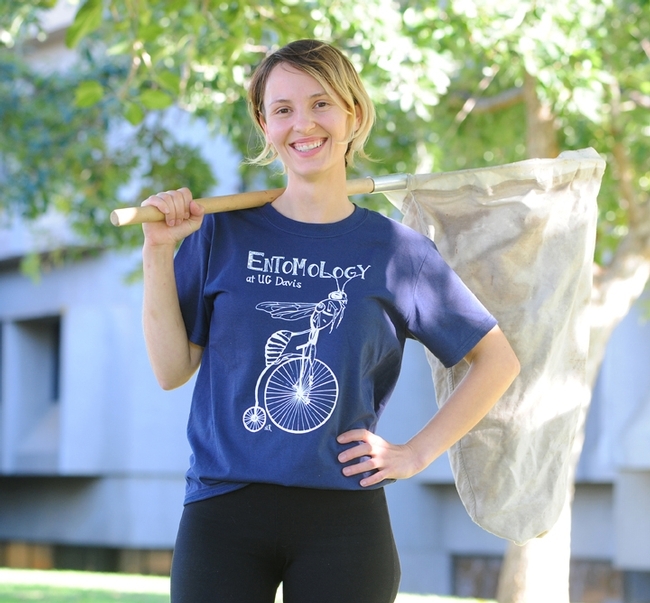
Junior specialist Stacey Rice of the UC Davis Department of Entomology and Nematology wearing the award-winning t-shirt that she designed. (Photo by Kathy Keatley Garvey)

A foraging European paper wasp, Polistes dominula. (Photo by Kathy Keatley Garvey)
'Tis the season to balance food with physical activity
For years the news and media have released reports that the holidays mean weight gain and ever-widening waistlines. All the hype leaves me asking: how many holidays between Thanksgiving and New Year’s do we actually have?
Ok, so take out your calendar and circle the holidays and potential “food-related” events you might attend. We have Thanksgiving Day, Hanukkah, Christmas Day, Kwanzaa, New Year’s Eve, and a Saturday or two of holiday parties to attend. When we look at it that way, it becomes more and more clear to us that Thanksgiving isn’t our ticket to eat foods laden with fat throughout the month of December! What it does do, however, is remind us of the food related events to come.
There are a few things in life that that we just can’t control: holiday gatherings, office Christmas parties, laughing at a not-so-funny joke, and, did I mention, family? Let’s face it, as much as we would like to control the holiday season, there are times when we just can’t.
What’s completely within our control? Physical activity! I know, I know, the moment I say physical activity we start thinking of the closet of winter clothes we need to organize, the windows that need to be washed (even though it’s going to rain tomorrow), or the dusting that you just haven’t been able to get to all summer (maybe that’s just me).
But if we know that the next month or so is going to be filled with food-related activities, why not counter-balance the darts of despair with shields of activity? Because that my friend, we can control!
Increasing physical activity provides the body and mind with many benefits:
- Increase your chances of living longer
- Feel better about yourself
- Decrease your chances of becoming depressed
- Sleep well at night
- Move around more easily
- Have stronger muscles and bones
- Stay at or get to a healthy weight
- Be with friends or meet new people
- Enjoy yourself and have fun
Why should I move more? According to the USDA guidelines, when we are not physically active, we increase our chances of:
- Heart disease
- Type 2 diabetes
- High blood pressure
- High blood cholesterol
- Stroke
Physical activity can divided into four different types:
- Aerobic activities: this activity can be moderate or vigorous (running, walking, skating)
- Muscle-strengthening activities: makes your muscles stronger (weight lifting, push-ups)
- Bone-strengthening activities: make your bones stronger (jumping)
- Balance and stretching activities: enhance physical stability and flexibility (yoga, dancing, t’ai chi)
So what’s your type? Do you like vigorous or moderate exercise? Don’t be afraid to get creative! Physical activity is simply movement of the body that uses energy. Find more ways to increase your physical activity at home, work, and play by visiting Choosemyplate.gov
This holiday season, lets focus on the parts of the holiday season we can control.
Why wait for New Year’s to start gaining the benefits of physical activity?
Abundant holiday confections demand self-discipline
UC Cooperative Extension nutrition, family and consumer sciences advisor Concepcion Mendoza told Mosby the health problems related to consistent, excessive sugar consumption include obesity, diabetes, hyperglycemia and hypoglycemia, increased risk of heart disease, depression, hypertension, cancer, tooth decay, gum disease and an overall undermining of the body's endocrine system.
"As our body tries to metabolize sugar, sugar draws on our body's reserve of vitamins and minerals," she said. "When those reserves are gone, the metabolism of good cholesterol and fatty acids is impeded, contributing to higher blood serum, triglycerides and bad cholesterol."
The article suggests eating a holiday treat when at celebrations, "but savor a small piece of something sweet rather than sampling everything available."
Woodlake Pride: Youth in gardens, out of gangs
Gosnia Wozniacka (Associated Press), San Francisco Chronicle
Over the past seven years, UC Cooperative Extension farm advisor Manuel Jimenez and his wife Olga have taught hundreds of young volunteers farming techniques, work habits and communication skills to prepare them for jobs or college. With creativity and help from the community, they turned 14 desolate acres into lush gardens of vines, vegetables and fruit trees. And the local police chief credits the program, Woodlake Pride, with helping fight local gang crime.
"We want to grow kids in our gardens, because we've seen what violence, drugs and alcohol can do," Jimenez said.

